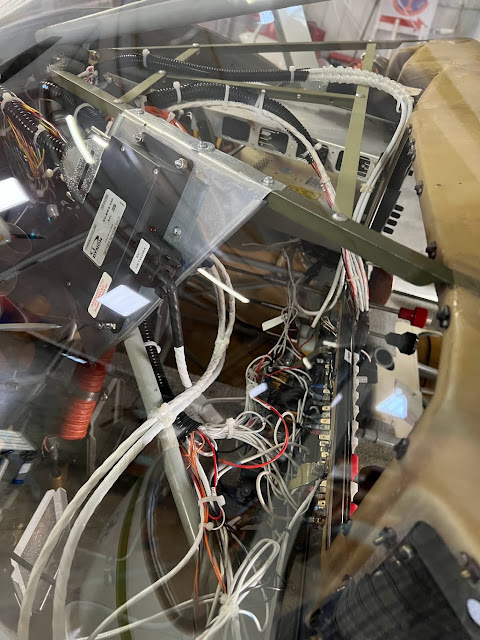It began as a couple of guys wanting to help out a lady who was in the somewhat enviable, yet not enviable, position of owning but not wanting an airport. Mark and I being the Boy Scouts we once were, decided to see what we could do to help her sell it. So we wrote a letter and before we knew it we were running errands and fielding all sorts of questions. All we wanted was to be assured the airport would remain an airport so we'd have a place to put our airplanes!
Long story short, the local Air Museum bought the airfield and now we find ourselves untangling years of handshake deals and some documented ones and making a consistent platform for the airfield to go forward and, hopefully, last a long time.
We're in a little corner of Paradise known as Hendersonville NC, on a plateau in the French Broad River valley of western North Carolina. The airfield is next to a 1932 airfield established by a local fellow named Oscar Meyer. Oscar built his first airplane in the late 1920s, a glider, and learned to fly it by having it pulled behind a car down the main street of town. There were objections, as you can imagine, so the teenager took it to a cornfield just outside of town and modified the glider with a car engine and that's how the Hendersonville Airport began.
As a little boy I could see the light beam of the rotating beacon at the airport from my bedroom window as it traced across the sky. My first view of the airport was when my family drove by on our way to the nearby fairgrounds and I saw airplanes on the ground, just a quick view of them and they were gone, but I knew they were there. I believe it was from that point on I wanted to fly.
So now here I am, retired and still flying little airplanes from a grass runway next door to Oscar Meyer's and loving it.
One of these days I'll get around writing my book (they say we all have one in us) and we'll have a grand old time seeing the world together that once existed only in my imagination. For now, though, There's a fellow wanting a hangar . . . . .














